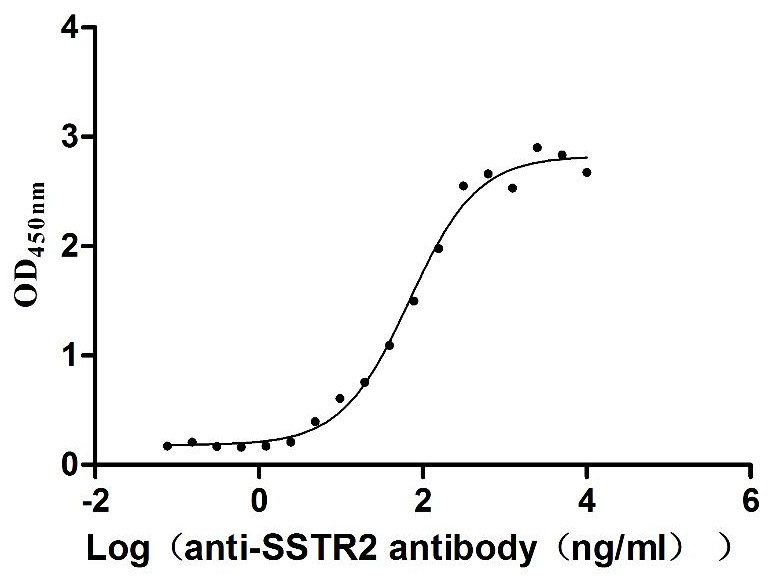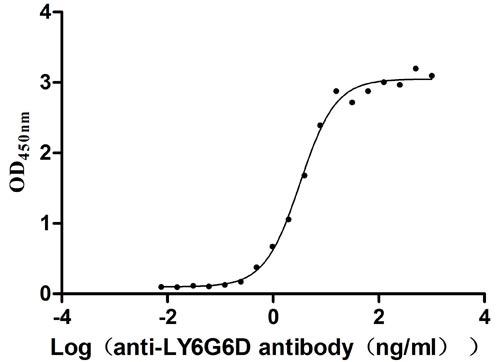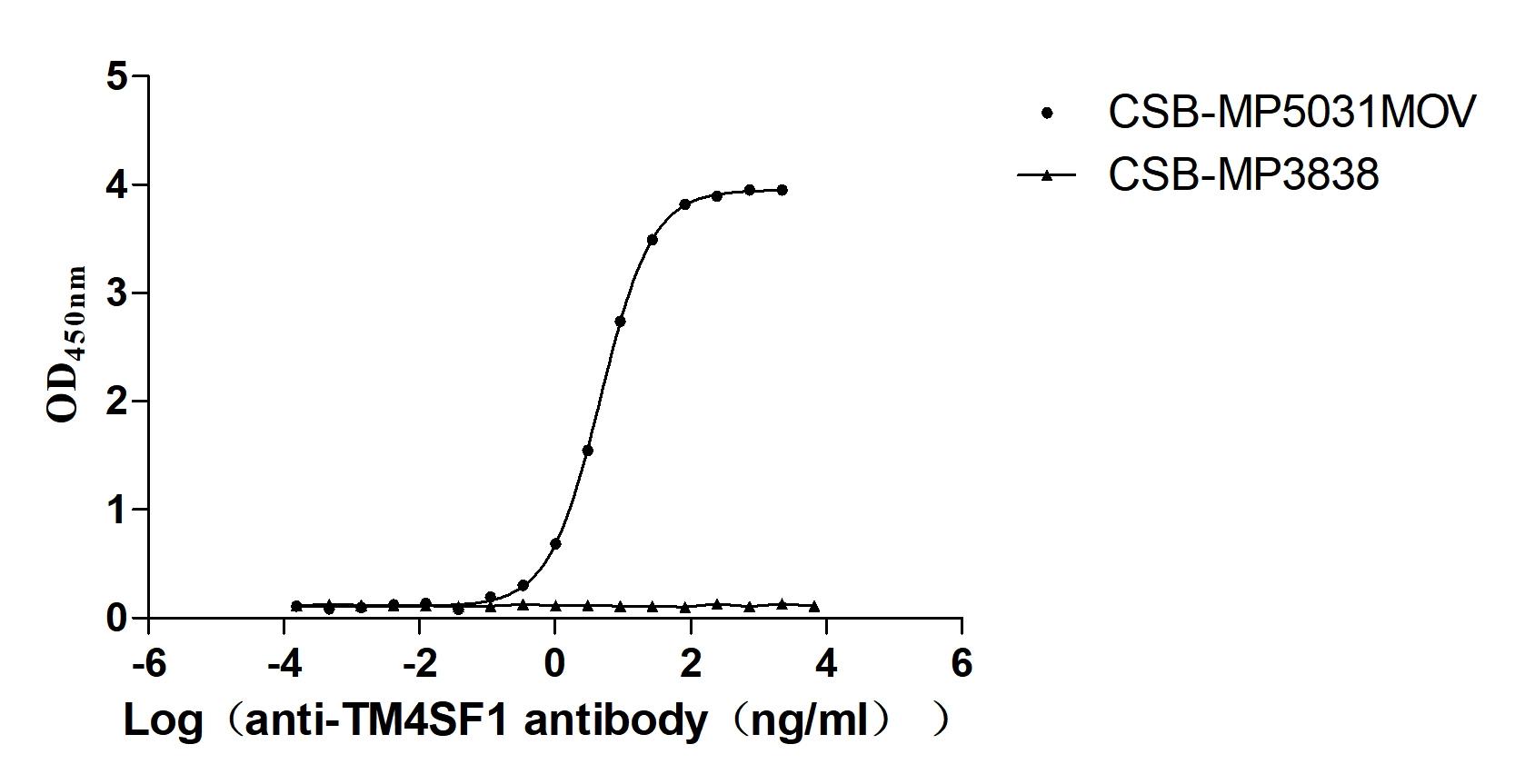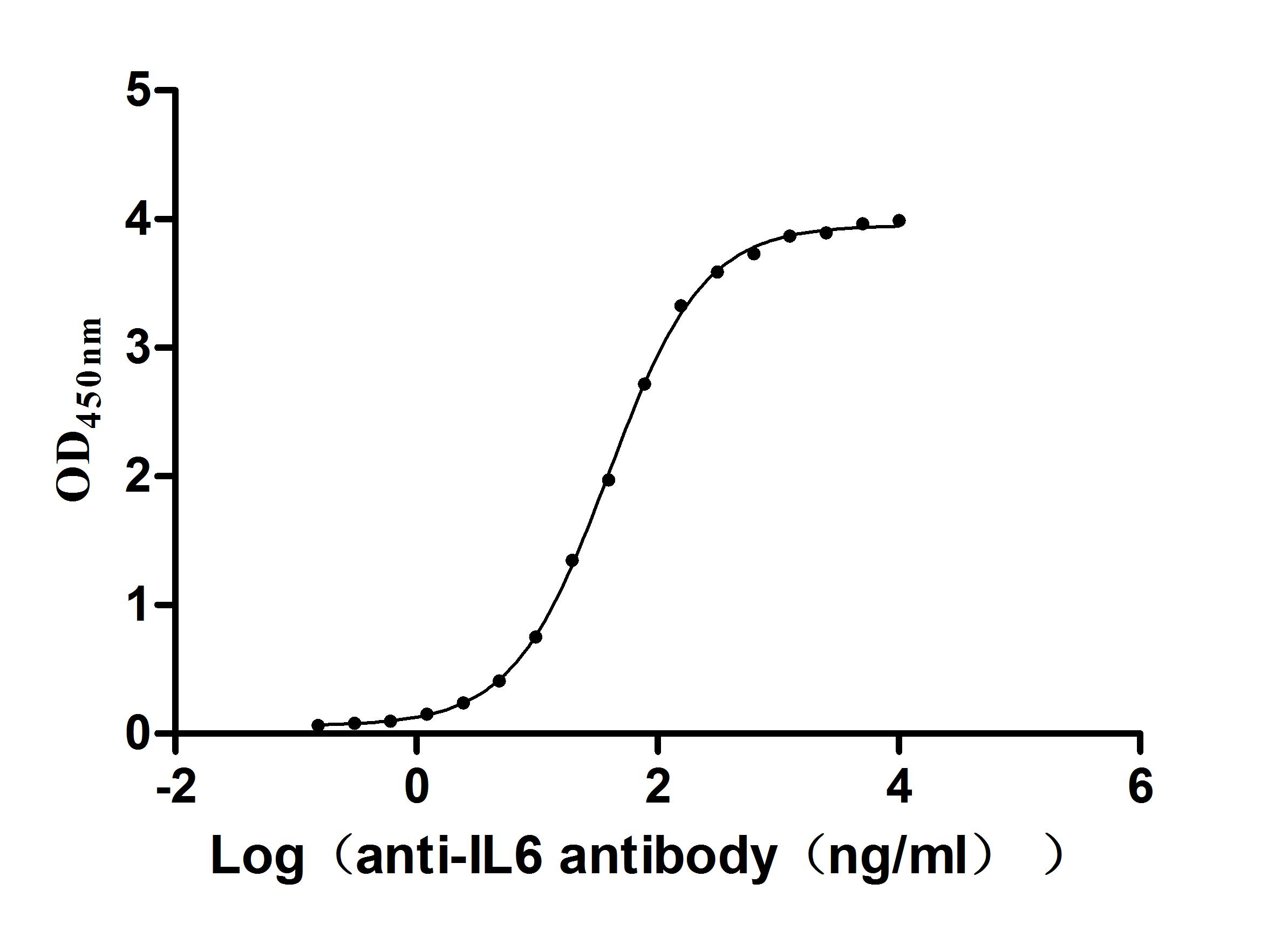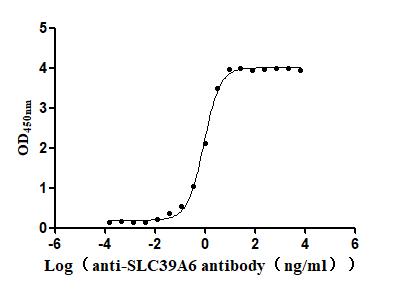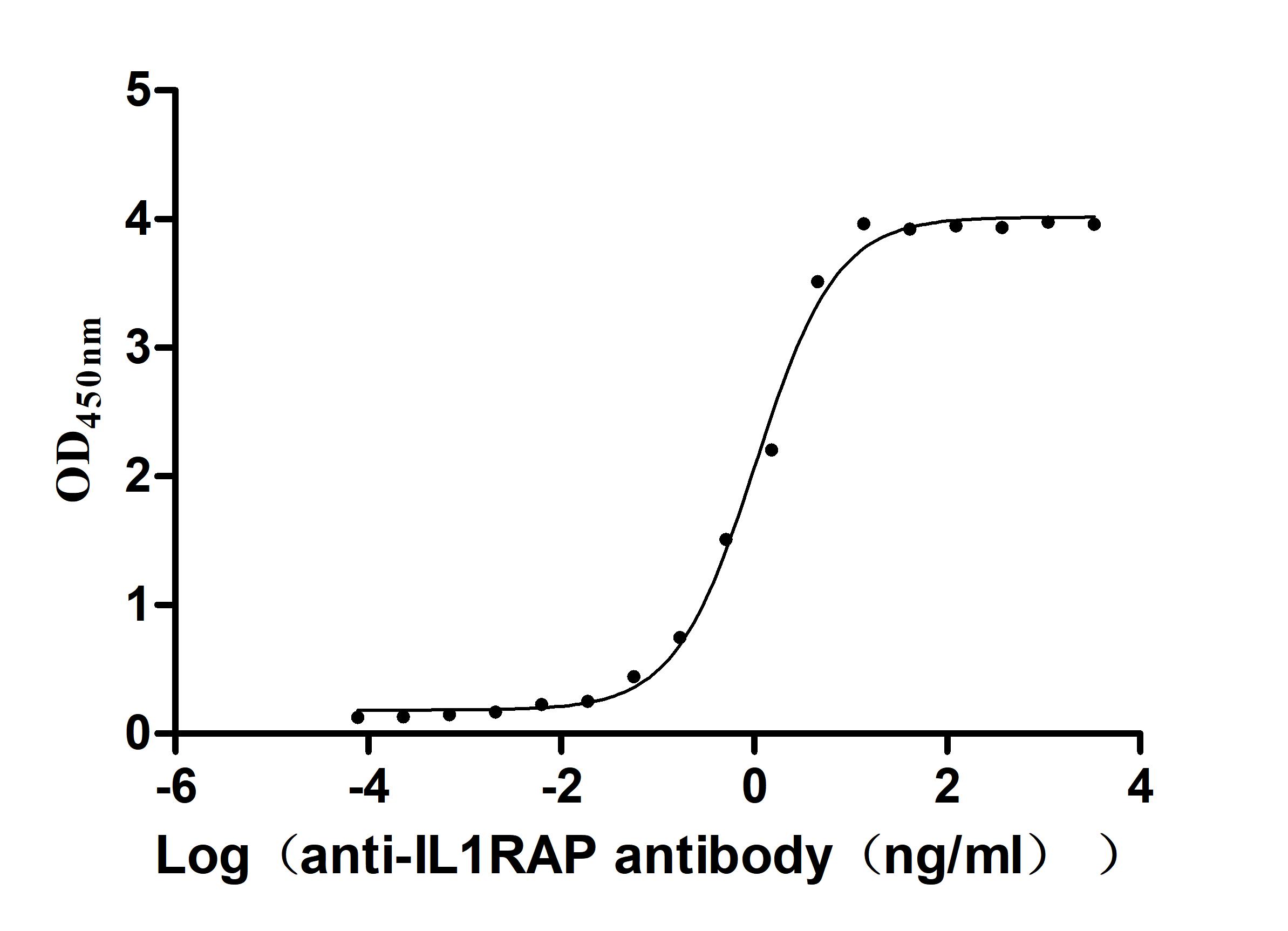Recombinant Mouse Cyclin-dependent-like kinase 5 (Cdk5)
-
中文名称:Recombinant Mouse Cyclin-dependent-like kinase 5(Cdk5),Yeast
-
货号:CSB-YP005067MO
-
规格:
-
来源:Yeast
-
其他:
-
中文名称:Recombinant Mouse Cyclin-dependent-like kinase 5(Cdk5),Yeast
-
货号:CSB-EP005067MO
-
规格:
-
来源:E.coli
-
其他:
-
中文名称:Recombinant Mouse Cyclin-dependent-like kinase 5(Cdk5),Yeast
-
货号:CSB-EP005067MO-B
-
规格:
-
来源:E.coli
-
共轭:Avi-tag Biotinylated
E. coli biotin ligase (BirA) is highly specific in covalently attaching biotin to the 15 amino acid AviTag peptide. This recombinant protein was biotinylated in vivo by AviTag-BirA technology, which method is BriA catalyzes amide linkage between the biotin and the specific lysine of the AviTag.
-
其他:
-
中文名称:Recombinant Mouse Cyclin-dependent-like kinase 5(Cdk5),Yeast
-
货号:CSB-BP005067MO
-
规格:
-
来源:Baculovirus
-
其他:
-
中文名称:Recombinant Mouse Cyclin-dependent-like kinase 5(Cdk5),Yeast
-
货号:CSB-MP005067MO
-
规格:
-
来源:Mammalian cell
-
其他:
产品详情
-
纯度:>85% (SDS-PAGE)
-
基因名:Cdk5
-
Uniprot No.:
-
别名:Cdk5; Cdkn5; Crk6Cyclin-dependent-like kinase 5; EC 2.7.11.1; CR6 protein kinase; CRK6; Cell division protein kinase 5; Serine/threonine-protein kinase PSSALRE; Tau protein kinase II catalytic subunit; TPKII catalytic subunit
-
种属:Mus musculus (Mouse)
-
蛋白长度:Full length protein
-
表达区域:1-292
-
氨基酸序列MQKYEKLEKI GEGTYGTVFK AKNRETHEIV ALKRVRLDDD DEGVPSSALR EICLLKELKH KNIVRLHDVL HSDKKLTLVF EFCDQDLKKY FDSCNGDLDP EIVKSFLFQL LKGLGFCHSR NVLHRDLKPQ NLLINRNGEL KLADFGLARA FGIPVRCYSA EVVTLWYRPP DVLFGAKLYS TSIDMWSAGC IFAELANAGR PLFPGNDVDD QLKRIFRLLG TPTEEQWPAM TKLPDYKPYP MYPATTSLVN VVPKLNATGR DLLQNLLKCN PVQRISAEEA LQHPYFSDFC PP
-
蛋白标签:Tag type will be determined during the manufacturing process.
The tag type will be determined during production process. If you have specified tag type, please tell us and we will develop the specified tag preferentially. -
产品提供形式:Lyophilized powder
Note: We will preferentially ship the format that we have in stock, however, if you have any special requirement for the format, please remark your requirement when placing the order, we will prepare according to your demand. -
复溶:We recommend that this vial be briefly centrifuged prior to opening to bring the contents to the bottom. Please reconstitute protein in deionized sterile water to a concentration of 0.1-1.0 mg/mL.We recommend to add 5-50% of glycerol (final concentration) and aliquot for long-term storage at -20℃/-80℃. Our default final concentration of glycerol is 50%. Customers could use it as reference.
-
储存条件:Store at -20°C/-80°C upon receipt, aliquoting is necessary for mutiple use. Avoid repeated freeze-thaw cycles.
-
保质期:The shelf life is related to many factors, storage state, buffer ingredients, storage temperature and the stability of the protein itself.
Generally, the shelf life of liquid form is 6 months at -20°C/-80°C. The shelf life of lyophilized form is 12 months at -20°C/-80°C. -
货期:Delivery time may differ from different purchasing way or location, please kindly consult your local distributors for specific delivery time.Note: All of our proteins are default shipped with normal blue ice packs, if you request to ship with dry ice, please communicate with us in advance and extra fees will be charged.
-
注意事项:Repeated freezing and thawing is not recommended. Store working aliquots at 4°C for up to one week.
-
Datasheet :Please contact us to get it.
靶点详情
-
功能:Proline-directed serine/threonine-protein kinase essential for neuronal cell cycle arrest and differentiation and may be involved in apoptotic cell death in neuronal diseases by triggering abortive cell cycle re-entry. Interacts with D1 and D3-type G1 cyclins. Phosphorylates SRC, NOS3, VIM/vimentin, p35/CDK5R1, MEF2A, SIPA1L1, SH3GLB1, PXN, PAK1, MCAM/MUC18, SEPT5, SYN1, DNM1, AMPH, SYNJ1, CDK16, RAC1, RHOA, CDC42, TONEBP/NFAT5, MAPT/TAU, MAP1B, histone H1, p53/TP53, HDAC1, APEX1, PTK2/FAK1, huntingtin/HTT, ATM, MAP2, NEFH and NEFM. Regulates several neuronal development and physiological processes including neuronal survival, migration and differentiation, axonal and neurite growth, synaptogenesis, oligodendrocyte differentiation, synaptic plasticity and neurotransmission, by phosphorylating key proteins. Activated by interaction with CDK5R1 (p35) and CDK5R2 (p39), especially in post-mitotic neurons, and promotes CDK5R1 (p35) expression in an autostimulation loop. Phosphorylates many downstream substrates such as Rho and Ras family small GTPases (e.g. PAK1, RAC1, RHOA, CDC42) or microtubule-binding proteins (e.g. MAPT/TAU, MAP2, MAP1B), and modulates actin dynamics to regulate neurite growth and/or spine morphogenesis. Phosphorylates also exocytosis associated proteins such as MCAM/MUC18, SEPT5, SYN1, and CDK16/PCTAIRE1 as well as endocytosis associated proteins such as DNM1, AMPH and SYNJ1 at synaptic terminals. In the mature central nervous system (CNS), regulates neurotransmitter movements by phosphorylating substrates associated with neurotransmitter release and synapse plasticity; synaptic vesicle exocytosis, vesicles fusion with the presynaptic membrane, and endocytosis. Promotes cell survival by activating anti-apoptotic proteins BCL2 and STAT3, and negatively regulating of JNK3/MAPK10 activity. Phosphorylation of p53/TP53 in response to genotoxic and oxidative stresses enhances its stabilization by preventing ubiquitin ligase-mediated proteasomal degradation, and induces transactivation of p53/TP53 target genes, thus regulating apoptosis. Phosphorylation of p35/CDK5R1 enhances its stabilization by preventing calpain-mediated proteolysis producing p25/CDK5R1 and avoiding ubiquitin ligase-mediated proteasomal degradation. During aberrant cell-cycle activity and DNA damage, p25/CDK5 activity elicits cell-cycle activity and double-strand DNA breaks that precedes neuronal death by deregulating HDAC1. DNA damage triggered phosphorylation of huntingtin/HTT in nuclei of neurons protects neurons against polyglutamine expansion as well as DNA damage mediated toxicity. Phosphorylation of PXN reduces its interaction with PTK2/FAK1 in matrix-cell focal adhesions (MCFA) during oligodendrocytes (OLs) differentiation. Negative regulator of Wnt/beta-catenin signaling pathway. Activator of the GAIT (IFN-gamma-activated inhibitor of translation) pathway, which suppresses expression of a post-transcriptional regulon of proinflammatory genes in myeloid cells; phosphorylates the linker domain of glutamyl-prolyl tRNA synthetase (EPRS) in a IFN-gamma-dependent manner, the initial event in assembly of the GAIT complex. Phosphorylation of SH3GLB1 is required for autophagy induction in starved neurons. Phosphorylation of TONEBP/NFAT5 in response to osmotic stress mediates its rapid nuclear localization. MEF2 is inactivated by phosphorylation in nucleus in response to neurotoxin, thus leading to neuronal apoptosis. APEX1 AP-endodeoxyribonuclease is repressed by phosphorylation, resulting in accumulation of DNA damage and contributing to neuronal death. NOS3 phosphorylation down regulates NOS3-derived nitrite (NO) levels. SRC phosphorylation mediates its ubiquitin-dependent degradation and thus leads to cytoskeletal reorganization. May regulate endothelial cell migration and angiogenesis via the modulation of lamellipodia formation. Involved in dendritic spine morphogenesis by mediating the EFNA1-EPHA4 signaling. The complex p35/CDK5 participates in the regulation of the circadian clock by modulating the function of CLOCK protein: phosphorylates CLOCK at 'Thr-451' and 'Thr-461' and regulates the transcriptional activity of the CLOCK-ARNTL/BMAL1 heterodimer in association with altered stability and subcellular distribution.
-
基因功能参考文献:
- these results indicate that phosphorylation of CHIP at Ser20 by Cdk5 activation inhibits CHIP-mediated truncated apoptosis-inducing factor (tAIF) degradation, thereby contributing to tAIF-induced neuronal cell death following rotenone treatment PMID: 29111393
- Identification of candidate lncRNAs regulated by Cdk5 in mouse skin. PMID: 29890311
- These results of this study suggest that a physiological role of Cdk5 in visual cortex is to consolidate and stabilize neural circuits through controlling GABAergic signaling. PMID: 29031852
- Mcl-1 is a disease-specific target of Cdk5, which associates with Cdk5 under basal conditions, but is not regulated by it. PMID: 28751497
- Selective loss of Cdk5 in dorsolateral striatum increased locomotor activity and attenuated motor learning. PMID: 27443506
- CDK5-mediated phosphorylation of Sirt2 has a role in to depressive-like behavior induced by social defeat stress PMID: 29158185
- findings collectively demonstrate that the Cdk5-dependent phosphorylation of liprinalpha1 is important for the postsynaptic organization during activity-dependent synapse development. PMID: 28760951
- Study generated Purkinje cell-specific p35; p39 double knockout, L7cre-p35f/f; p39-/- mice and found there were ectopic Purkinje cells scattered singly or in groups over the cerebellar cortex due to Cdk5-loss-dependent migration failure. Selective loss of Cdk5 activity in Purkinje cells contributed to motor impairments. TrkB agonist treatment partially rescued Purkinje cell morphological defects of dendritic structures. PMID: 28589675
- Stress-induced nuclear translocation of CDK5 suppresses neuronal death by downregulating ERK activation via VRK3 phosphorylation PMID: 27346674
- hyperactivation of p25 may temporarily enhance neural progenitor cell proliferation, but impair their long-term survival PMID: 27283769
- Cdk5 directly phosphorylates Cx43, which regulates the membrane localization and degradation of Cx43 in neurons. PMID: 25952543
- Cdk5 may play an important role in endoplasmic reticulum stress induced podocyte apoptosis through MEKK1/JNK pathway in diabetic nephropathy. PMID: 28024901
- conditional inactivation of Cdk5 in the jck mice significantly attenuates cystic disease progression and is associated with shortening of ciliary length as well as restoration of cellular differentiation. Our results suggest that CDK5 may regulate ciliary length by affecting tubulin dynamics via its substrate collapsin response mediator protein 2. PMID: 27053712
- Silencing of CDK5 increased BDNF expression, temporarily increased phosphorylation of CaMKII, ERK, and CREB; and facilitated calcium signaling in neurites. Together, these data suggest that CDK5 downregulation induces synaptic plasticity in mature neurons involving Ca(2+) signaling and BDNF/CREB activation. PMID: 27506619
- we report a key role for Cdk5 activity in the development of allogeneic T-cell responses after allogeneic hematopoietic cell transplantation PMID: 28064242
- Cdk5 regulates axon outgrowth through the GRAB-mediated Rab8-Rab11 cascade. PMID: 28123016
- these results show that Cdk5-mediated phospho-regulation of Foxo3 can activate several genes that promote neuronal death and aberrant Abeta processing, thereby contributing to the progression of neurodegenerative pathologies. PMID: 28157684
- In this study, we discovered that selective upregulation of p39 is the underlying mechanism that accommodates the increased functional requirement of Cdk5 activation during neuronal differentiation. In addition, we demonstrated that p39 selectively directs Cdk5 to phosphorylate protein substrates essential for axonal development, dendritic spine formation, and synaptogenesis. Moreover, our studies suggest opposing roles o PMID: 27807169
- It suggests that ectopic increase of Cdk5 kinase activity through conversion of p35 to p25 is involved in the process of neuronal death induced by hypoxia. PMID: 27402274
- The behavioral and molecular data indicated that TRPV1 is strongly modulated by Cdk5-mediated phosphorylation at position threonine-407(mouse)/threonine406(rat). PMID: 26902776
- that Cdk5-dependent activation of neuronal inflammasomes was involved in the progression of Parkinson's disease PMID: 26853432
- we demonstrate that Cdk5 phosphorylates collapsin response mediator protein 2 (CRMP2) in the dendritic spines of cultured hippocampal neurons and in vivo in the mouse brain. When we eliminated CRMP2 phosphorylation in CRMP2(KI/KI) mice, the densities of dendritic spines significantly decreased in hippocampal CA1 pyramidal neurons in the mouse brain. PMID: 26819770
- Results indicate that dendritic spine formation and neuronal maintenance are dependent on Cdk5 activity PMID: 25404468
- Data indicate a contribution of D2 dopamine receptors to the effects of repetitive transcranial magnetic stimulation (rTMS) on postsynaptic density protein-95 (PSD-95) and cyclin-dependent kinase 5 (CDK5) levels. PMID: 26585834
- olfactory deprivation by olfactory bulbectomy hastens tau pathology and cholinergic system impairment in htau mice possibly via activation of cdk5. PMID: 25465240
- The transiently active CDK5-p35 complexes limited the LPS-stimulated phosphorylation and activation of various mitogen-activated protein kinases (MAPKs), thereby preventing the premature production of SOCS3 (suppressor of cytokine signaling 3) PMID: 26602020
- this finding highlights a central role for Cdk5 in immune checkpoint regulation by tumor cells. PMID: 27463676
- Cdk5 (cyclin-dependent kinase 5) requires p35 regulatory subunit (Cdk5r1) for activation; data suggest Cdk5r1 stability regulates Cdk5 activity in neurons; Cdk5r1 is rapidly degraded by 2 proteasome methods, ubiquitination-dependent and -independent. PMID: 26631721
- The findings of this study suggest that CDK5-depleted astrocytes act as a neuroprotective trophic source in a Rac1-dependent manner. PMID: 26160434
- phosphorylation of coronin 1 on Thr(418/424) by cyclin-dependent kinase (CDK) 5 activity was responsible for coronin 1-Galphas association and the modulation of cAMP production PMID: 26823173
- Nitric oxide -induced reduction in Cdk5 activity is mediated by S-nitrosylation of p35, resulting in its ubiquitination and degradation by the E3 ligase PJA2. PMID: 26503494
- conditional deletion of CDK5 significantly attenuates DRP1 phosphorylation at S585 and rescues mitochondrial fission defects in neurons exposed to NMDA. PMID: 26002103
- Cdk5 regulates lymphatic vessel formation and function via phosphorylation of Foxc2. Endothelial-specific Cdk5 knockdown causes congenital lymphatic dysfunction and lymphedema due to defective lymphatic vessel patterning and valve formation. PMID: 26027726
- Acute stress (AS) caused a biphasic effect on CDK5 activity, initially reducing but increasing afterwards in prefrontal cortex and hippocampus, whereas chronic unpredictable stress (CS) strongly increased it in these brain areas. PMID: 26057048
- Cdk5 modulates gene expression during T-cell activation by impairing the repression of gene transcription by histone deacetylase 1 (HDAC1) through specific phosphorylation of the mSin3a protein at serine residue 861. PMID: 25785643
- These data show that cell cycle-dependent mechanisms can control ciliary length through a CDK5-FBW7-NDE1 pathway. PMID: 26206584
- p35 interacts with NIF-1 and regulates the subcellular localization of the protein independent of Cdk5-dependent phosphorylation. ...reveal a new mechanism of p35 in transcriptional regulation that does not require the kinase activity of Cdk5 PMID: 25329792
- These data point to an essential role for Cdk5 in the differentiation of T cells as it regulates Foxp3 gene expression through phosphorylation of Stat3. PMID: 26198700
- Study shows that Cdk5 and its activator p35 control the tangential migration of interneurons toward and within the cerebral cortex by modulating the critical neurodevelopmental signaling pathway, ErbB4/phosphatidylinositol 3-kinase PMID: 24142862
- Results show that Cdk5 can directly phosphorylate CaV3.1 channels at serine 2234 resulting in modulation of depolarization-dependent Ca2+ entry. PMID: 25760945
- Cdk5/p35 regulates spatial learning and memory. PMID: 25404232
- LRRK2 facilitates tau phosphorylation indirectly by recruiting tau or cdk5 rather than by directly phosphorylating tau PMID: 26268594
- Our findings suggest that p35/Rac1 signaling is critical in the CDK5 silencing-induced neuroprotection against glutamate neurotoxicity PMID: 25864429
- CDK5 might promote proliferation and differentiation of neural stem cells PMID: 24448753
- Mitochondrial fragmentation mediated by beta-amyloid oxidative stress is dependent upon mitofusin 2 expression activating Cdk5. PMID: 25359615
- This report shows that herpes simplex virus 1 increases p35 levels, changes the primary localization of CDK-5 from the nucleus to the cytoplasm, and enhances CDK-5 activity during lytic or acute infection. PMID: 25694605
- Phosphorylation of synaptic GTPase-activating protein (synGAP) by Ca2+/calmodulin-dependent protein kinase II (CaMKII) and cyclin-dependent kinase 5 (CDK5) alters the ratio of its GAP activity toward Ras and Rap GTPases. PMID: 25533468
- The Cdk5-mediated phosphorylation of EFhd2 affected its calcium binding activity. PMID: 24917152
- genetic ablation of Cdk5 in parvalbumin interneurons in mouse brain leads to an increase in GABAergic neurotransmission and impaired synaptic plasticity PMID: 25673832
- Cdk5 plays a novel and unexpected role in the degeneration of postmitotic neurons through modulation of the cellular location of FOXO1 PMID: 25673854
显示更多
收起更多
-
亚细胞定位:Nucleus. Cytoplasm. Cell membrane; Peripheral membrane protein. Perikaryon. Cell projection, lamellipodium. Cell projection, growth cone. Cell junction, synapse, postsynaptic density.
-
蛋白家族:Protein kinase superfamily, CMGC Ser/Thr protein kinase family, CDC2/CDKX subfamily
-
组织特异性:Specifically expressed in post-mitotic neurons and postsynaptic muscle.
-
数据库链接:
KEGG: mmu:12568
STRING: 10090.ENSMUSP00000030814
UniGene: Mm.298798
Most popular with customers
-
Recombinant Human C-X-C chemokine receptor type 4 (CXCR4)-VLPs (Active)
Express system: Mammalian cell
Species: Homo sapiens (Human)
-
Recombinant Human Somatostatin receptor type 2 (SSTR2)-VLPs (Active)
Express system: Mammalian cell
Species: Homo sapiens (Human)
-
Recombinant Human Lymphocyte antigen 6 complex locus protein G6d (LY6G6D) (Active)
Express system: Yeast
Species: Homo sapiens (Human)
-
Recombinant Macaca fascicularis Transmembrane 4 L6 family member 1 (TM4SF1)-VLPs (Active)
Express system: Mammalian cell
Species: Macaca fascicularis (Crab-eating macaque) (Cynomolgus monkey)
-
-
Recombinant Macaca fascicularis Zinc transporter ZIP6 isoform X1(SLC39A6),partial (Active)
Express system: Baculovirus
Species: Macaca fascicularis (Crab-eating macaque) (Cynomolgus monkey)
-
Recombinant Macaca fascicularis Interleukin 1 receptor accessory protein(IL1RAP), partial (Active)
Express system: Mammalian cell
Species: Macaca fascicularis (Crab-eating macaque) (Cynomolgus monkey)


-AC1.jpg)
